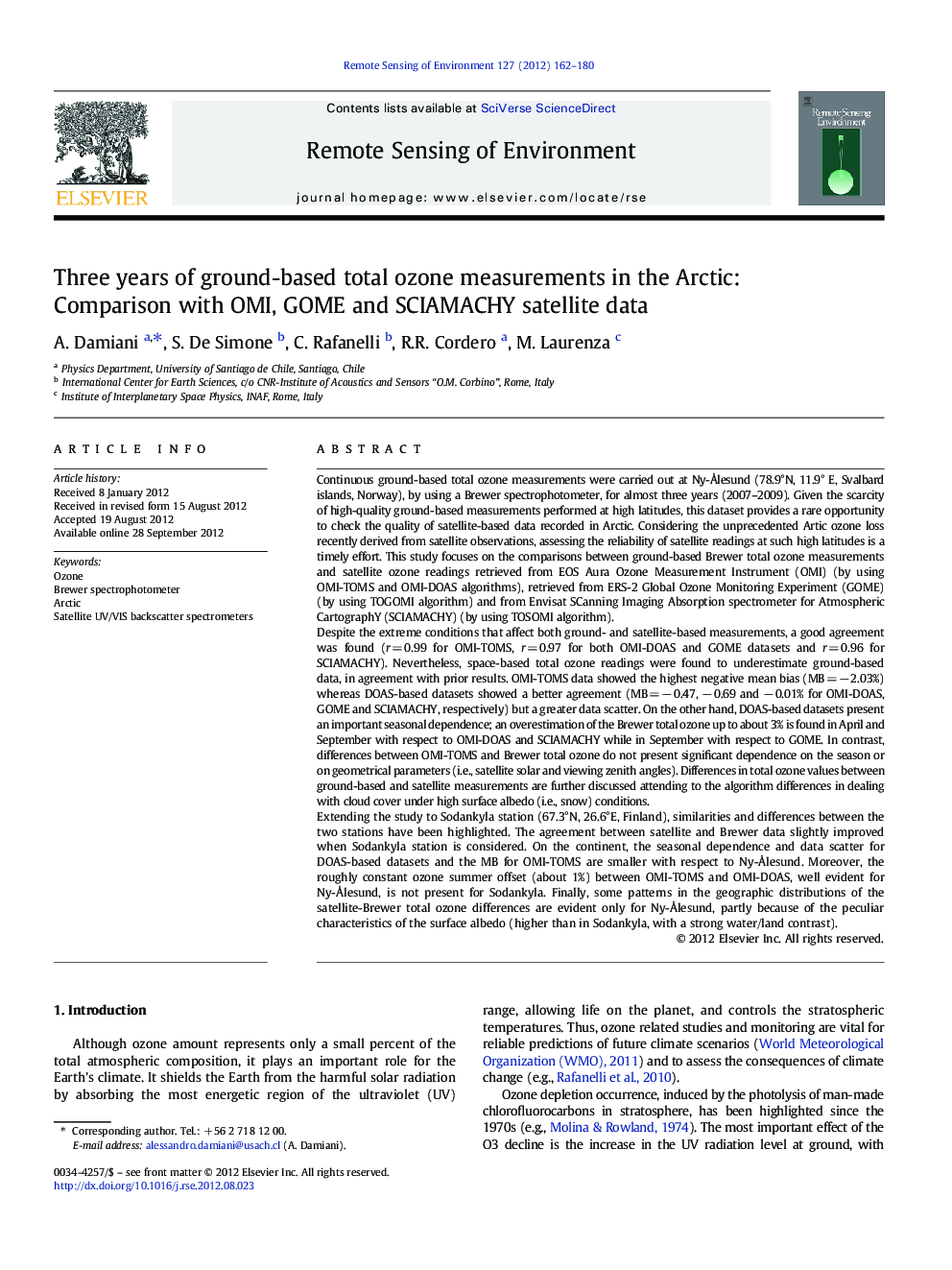| Article ID | Journal | Published Year | Pages | File Type |
|---|---|---|---|---|
| 4459095 | Remote Sensing of Environment | 2012 | 19 Pages |
Continuous ground-based total ozone measurements were carried out at Ny-Ålesund (78.9°N, 11.9° E, Svalbard islands, Norway), by using a Brewer spectrophotometer, for almost three years (2007–2009). Given the scarcity of high-quality ground-based measurements performed at high latitudes, this dataset provides a rare opportunity to check the quality of satellite-based data recorded in Arctic. Considering the unprecedented Artic ozone loss recently derived from satellite observations, assessing the reliability of satellite readings at such high latitudes is a timely effort. This study focuses on the comparisons between ground-based Brewer total ozone measurements and satellite ozone readings retrieved from EOS Aura Ozone Measurement Instrument (OMI) (by using OMI-TOMS and OMI-DOAS algorithms), retrieved from ERS-2 Global Ozone Monitoring Experiment (GOME) (by using TOGOMI algorithm) and from Envisat SCanning Imaging Absorption spectrometer for Atmospheric CartographY (SCIAMACHY) (by using TOSOMI algorithm).Despite the extreme conditions that affect both ground- and satellite-based measurements, a good agreement was found (r = 0.99 for OMI-TOMS, r = 0.97 for both OMI-DOAS and GOME datasets and r = 0.96 for SCIAMACHY). Nevertheless, space-based total ozone readings were found to underestimate ground-based data, in agreement with prior results. OMI-TOMS data showed the highest negative mean bias (MB = − 2.03%) whereas DOAS-based datasets showed a better agreement (MB = − 0.47, − 0.69 and − 0.01% for OMI-DOAS, GOME and SCIAMACHY, respectively) but a greater data scatter. On the other hand, DOAS-based datasets present an important seasonal dependence; an overestimation of the Brewer total ozone up to about 3% is found in April and September with respect to OMI-DOAS and SCIAMACHY while in September with respect to GOME. In contrast, differences between OMI-TOMS and Brewer total ozone do not present significant dependence on the season or on geometrical parameters (i.e., satellite solar and viewing zenith angles). Differences in total ozone values between ground-based and satellite measurements are further discussed attending to the algorithm differences in dealing with cloud cover under high surface albedo (i.e., snow) conditions.Extending the study to Sodankyla station (67.3°N, 26.6°E, Finland), similarities and differences between the two stations have been highlighted. The agreement between satellite and Brewer data slightly improved when Sodankyla station is considered. On the continent, the seasonal dependence and data scatter for DOAS-based datasets and the MB for OMI-TOMS are smaller with respect to Ny-Ålesund. Moreover, the roughly constant ozone summer offset (about 1%) between OMI-TOMS and OMI-DOAS, well evident for Ny-Ålesund, is not present for Sodankyla. Finally, some patterns in the geographic distributions of the satellite-Brewer total ozone differences are evident only for Ny-Ålesund, partly because of the peculiar characteristics of the surface albedo (higher than in Sodankyla, with a strong water/land contrast).
► The agreement between ground- and satellite-based total ozone is mostly good ► DOAS-based datasets, but not OMI-TOMS, show a seasonal dependence ► Influence of the surface albedo and satellite cloud parameters on SCIAMACHY/GOME ozone ► Ozone summer offset (1%) between OMI-TOMS and OMI-DOAS for Ny-Alesund but not for Sodankyla
